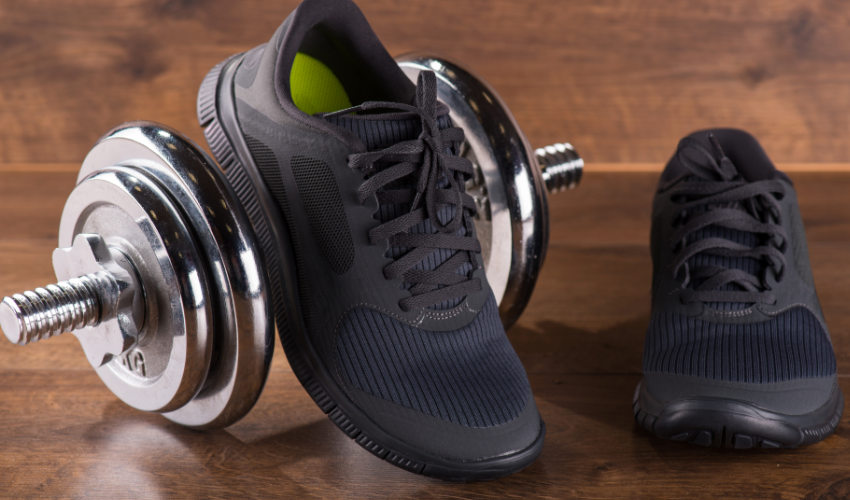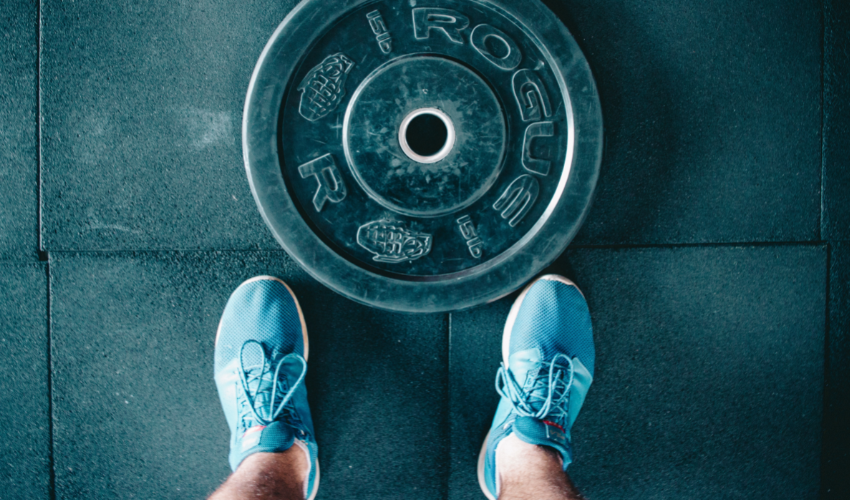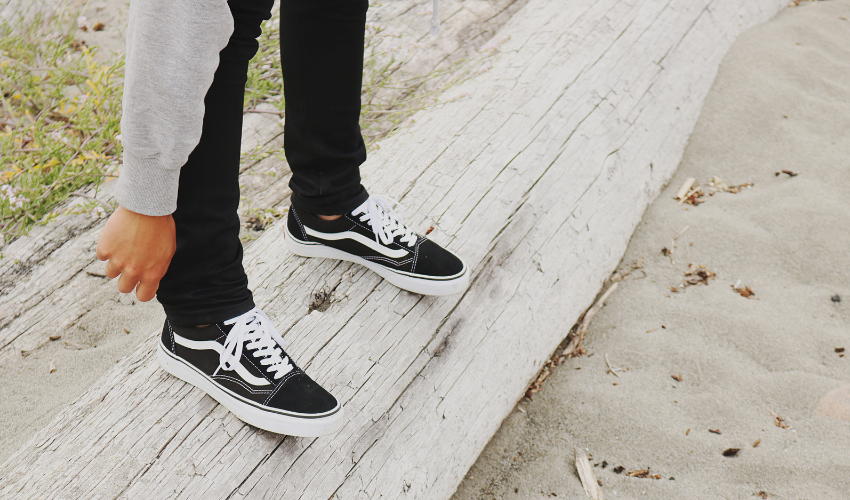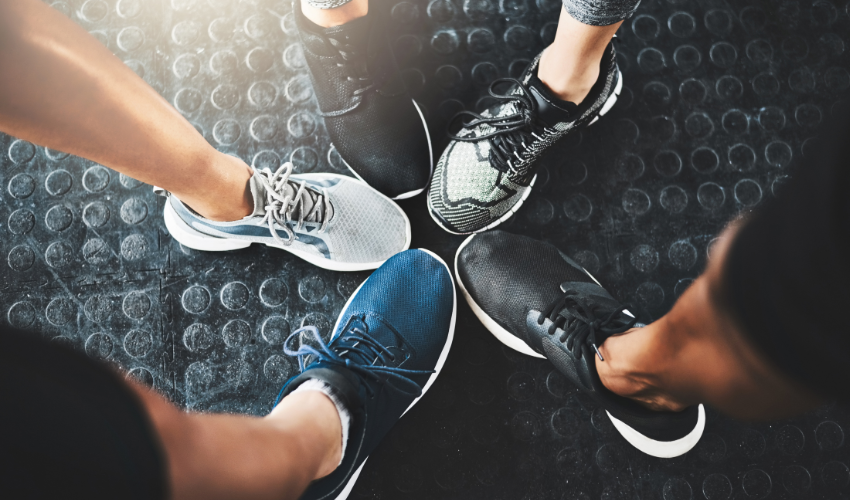Working out at the gym is an important part of a healthy lifestyle, but it’s equally important to choose the right equipment, including shoes. Wearing the right shoes can make a huge difference in your workout experience, as they provide support, stability, and comfort. The wrong shoes can lead to injury, pain, and even discourage you from continuing with your workout routine. In this article, we will provide a comprehensive guide to help you choose the best shoes for the gym. Whether you are a seasoned gym-goer or just starting out, this guide will provide valuable information and tips to help you make an informed decision.
Can I use running shoes for the gym?
Running shoes are a popular choice for gym-goers, but it’s important to understand that not all running shoes are suitable for gym activities. While running shoes may provide comfort and support for running, they may not be the best choice for other types of exercises such as weightlifting, bodyweight exercises, or high-impact activities.
Pros of using running shoes at the gym:
- Comfort: Running shoes are designed for comfort, which can make them a suitable option for gym activities that don’t require a lot of stability.
- Cushioning: Running shoes provide ample cushioning to absorb shock, which can be beneficial for exercises such as cardio or jumping.
Cons of using running shoes at the gym:
- Lack of stability: Running shoes are designed for forward motion, which means they may not provide enough stability for exercises that require lateral movement or side-to-side movements.
- Poor support: Running shoes may not offer enough support for exercises that put a lot of strain on your feet, such as weightlifting or bodyweight exercises.
When running shoes may be suitable for gym activities:
- Cardio: Running shoes can be a good choice for cardio exercises such as running on a treadmill, jumping rope, or cycling.
- Bodyweight exercises: If you are doing bodyweight exercises that don’t require a lot of stability, running shoes may be suitable.
When to avoid using running shoes at the gym:
- Weightlifting: If you plan to do a lot of weightlifting, it’s best to choose shoes specifically designed for weightlifting as running shoes may not provide enough support or stability.
- High-impact activities: If you plan to participate in high-impact activities such as plyometrics or box jumps, running shoes may not be the best choice as they may not provide enough support or stability.
While running shoes may be suitable for some gym activities, it’s important to consider your individual needs and choose shoes that provide the support, stability, and comfort you need for your specific workout routine.

Is it better to wear flat shoes to the gym?
Flat shoes, also known as minimalist shoes, are a popular choice for gym-goers due to their simplicity and natural feel. While flat shoes may provide a more natural feel and allow you to engage more of your foot muscles, they may not be the best choice for everyone.
Pros of wearing flat shoes to the gym:
- Natural feel: Flat shoes provide a more natural feel, allowing you to engage more of your foot muscles.
- Improved balance: Flat shoes can help improve balance and stability, which can be beneficial for exercises such as yoga or Pilates.
Cons of wearing flat shoes to the gym:
- Lack of support: Flat shoes may not provide enough support for exercises that put a lot of strain on your feet, such as weightlifting or bodyweight exercises.
- Risk of injury: Without proper support, wearing flat shoes during high-impact activities such as plyometrics or box jumps can increase the risk of injury.
When flat shoes may be suitable for gym activities:
- Yoga or Pilates: If you are doing low-impact exercises such as yoga or Pilates, flat shoes can be a good choice as they can improve balance and stability.
- Bodyweight exercises: If you are doing bodyweight exercises that don’t require a lot of stability, flat shoes may be suitable.
When to avoid flat shoes at the gym:
- Weightlifting: If you plan to do a lot of weightlifting, it’s best to choose shoes specifically designed for weightlifting as flat shoes may not provide enough support or stability.
- High-impact activities: If you plan to participate in high-impact activities such as plyometrics or box jumps, flat shoes may not be the best choice as they may not provide enough support or stability.
Whether or not flat shoes are a good choice for the gym depends on your individual needs and workout routine. Consider the type of exercises you will be doing, the amount of support you need, and your personal preferences when choosing gym shoes.
What Shoes Do Most Bodybuilders Wear?
When it comes to bodybuilding, having the right shoes can be just as important as having the right equipment. Bodybuilders put a lot of strain on their feet and legs, and having shoes that provide the necessary support and stability can help prevent injury and improve performance.
Popular Shoes Among Bodybuilders:
- Weightlifting shoes: Weightlifting shoes are designed specifically for weightlifting exercises and are a popular choice among bodybuilders. They typically have a flat, stable base and provide ample support for the feet and ankles.
- Cross-training shoes: Cross-training shoes are versatile shoes that can be used for a variety of exercises, including weightlifting. They are a good choice for bodybuilders who want a shoe that can handle multiple types of exercises.
Characteristics of Shoes That Are Suitable for Bodybuilding:
- Stable base: Shoes for bodybuilding should have a stable base to provide ample support for the feet and ankles during exercises.
- Adequate support: Shoes for bodybuilding should provide ample support for the feet and ankles to prevent injury and improve performance.
- Durability: Shoes for bodybuilding should be durable enough to withstand the repeated stress of weightlifting exercises.
Importance of Having the Right Shoes for Specific Exercises:
- Weightlifting: When doing weightlifting exercises, it’s important to have shoes that provide a stable base and ample support to prevent injury and improve performance.
- Bodyweight exercises: For bodyweight exercises, shoes with good support and stability can help prevent injury and improve performance.
- High-impact activities: For high-impact activities such as plyometrics or box jumps, shoes with good support and cushioning can help absorb shock and prevent injury.
The type of shoes a bodybuilder wears can have a significant impact on their performance and safety. When choosing shoes for bodybuilding, it’s important to consider the specific exercises you will be doing, the amount of support you need, and your personal preferences.

What is the Difference Between Gym and Running Shoes?
When it comes to working out, it’s important to choose the right type of shoes for the specific activity you’ll be doing. Gym shoes and running shoes are two common types of shoes used for exercise, but they are designed for different purposes and offer different benefits.
Key Differences Between Gym and Running Shoes:
- Design: Gym shoes are typically designed for weightlifting and other strength training exercises, while running shoes are designed for running and other high-impact activities.
- Support: Gym shoes generally provide more support for the feet and ankles than running shoes, as weightlifting exercises put more strain on these areas. Running shoes typically have more cushioning to absorb shock and protect the feet during high-impact activities.
- Traction: Gym shoes typically have a flat, non-slip sole for stability during weightlifting exercises, while running shoes have a more flexible sole for better traction and maneuverability during running.
Why it’s Important to Choose the Right Type of Shoes for Each Activity:
- Safety: Choosing the right type of shoes for each activity can help prevent injury and improve performance. Wearing shoes designed for weightlifting when running, for example, can lead to an increased risk of injury due to the lack of cushioning and support.
- Comfort: Wearing shoes designed for each specific activity can also improve comfort during exercise. Shoes designed for weightlifting, for example, may be more comfortable for weightlifting exercises than running shoes.
- Performance: Choosing the right type of shoes for each activity can also improve performance. Shoes designed for weightlifting, for example, can provide the stability and support needed for effective weightlifting exercises.
Choosing the right type of shoes for each activity is important for safety, comfort, and performance.
Why do People Work Out in Vans?
Vans, a popular casual shoe brand, have become a popular choice among people who work out in the gym. But what makes Vans a good option for gym activities, and when should you avoid wearing them?

Popularity of Vans Among Gym-Goers:
- Style: Vans are known for their stylish designs, and many gym-goers choose to wear them as a fashion statement.
- Comfort: Vans are also known for their comfortable fit, making them a popular choice for gym activities.
- Versatility: Vans can be worn for a variety of activities, including gym workouts, making them a convenient option for those who want to wear the same shoes for different activities.
Advantages of Wearing Vans for Gym Activities:
- Breathability: Vans are made of lightweight, breathable materials, making them a good choice for gym activities that may cause your feet to sweat.
- Traction: Vans have a flat, non-slip sole, which can provide good traction during gym activities.
- Flexibility: Vans are flexible, which can make them comfortable for a variety of gym activities, such as weightlifting and cardio exercises.
When to Avoid Wearing Vans to the Gym:
- High-Impact Activities: While Vans can be a good choice for low-impact activities, they may not provide enough support and cushioning for high-impact activities, such as running.
- Heavy Weightlifting: Vans may not provide the stability and support needed for heavy weightlifting exercises, so it’s best to wear shoes specifically designed for weightlifting in these cases.
Vans can be a good choice for some gym activities, but it’s important to consider the specific activity you’ll be doing and the level of support and cushioning you need. Wearing the right shoes for each activity can help prevent injury and improve performance.
Conclusion
In conclusion, wearing the right shoes for workout activities is essential for both performance and injury prevention. Running shoes may be suitable for some low-impact activities, but it’s important to consider their limitations and choose shoes specifically designed for gym activities when necessary. Flat shoes can offer several benefits, including stability and comfort, but may not be the best option for all activities. Bodybuilders often prefer shoes with specific characteristics, such as good stability and support, to help them perform at their best.
Gym shoes and running shoes are designed differently and serve different purposes, so it’s important to choose the right type of shoes for each activity. Vans, while popular among gym-goers, may not be the best option for all activities due to their lack of support and cushioning.
In summary, when choosing the best shoes for the gym, consider the type of activities you’ll be doing, the level of support and cushioning you need, and your personal preferences. By wearing the right shoes, you can improve your performance and reduce your risk of injury.
